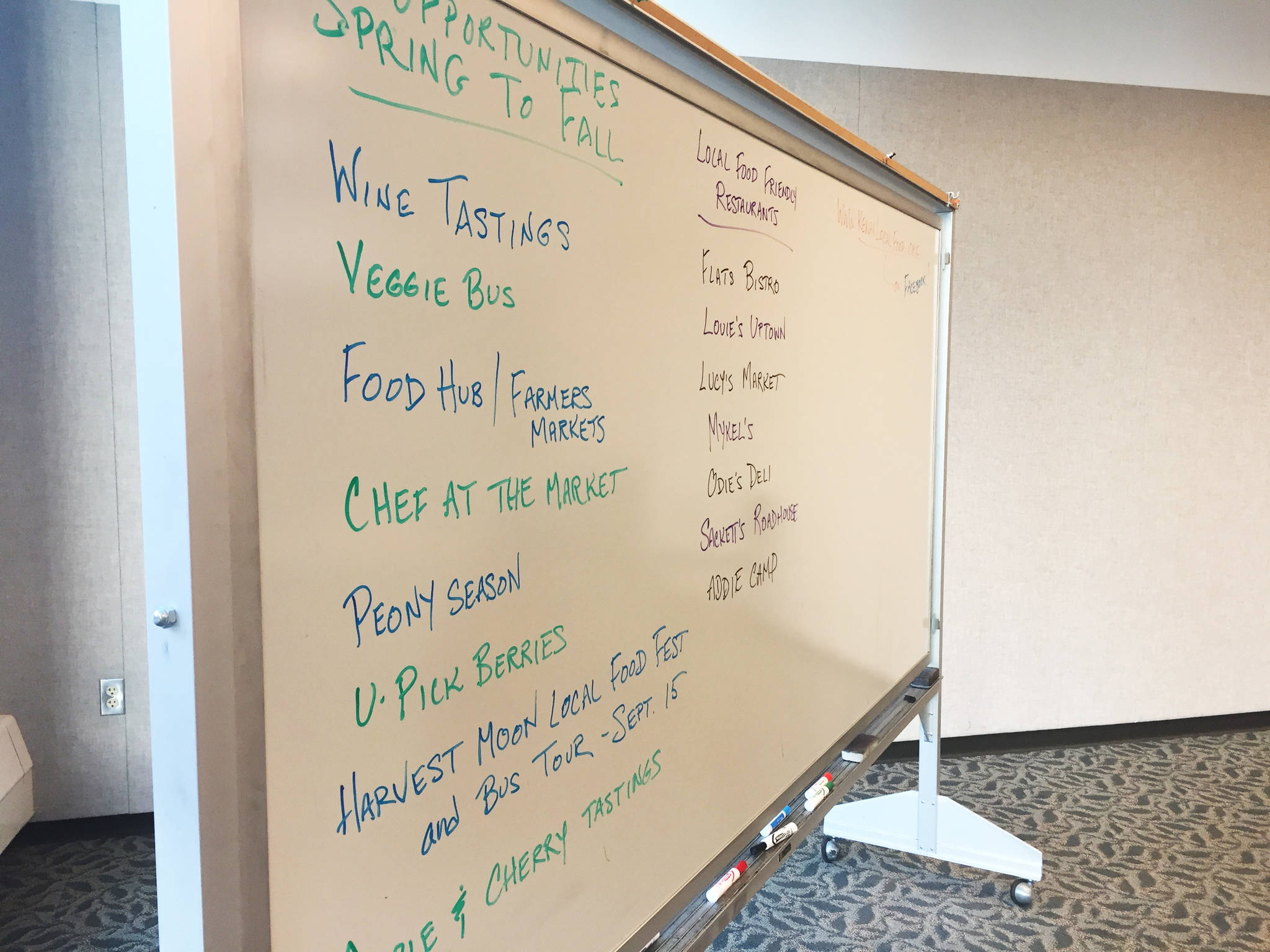Farmers in Alaska are looking to tourists to help round out their profit margins.
Agritourism, or farm-based tourism, is already a staple for many farmers in the Lower 48 but is relatively new in Alaska. But with a growing number of farms across Southcentral Alaska, including on the Kenai Peninsula, some are capitalizing on public curiosity about what it’s like to milk a goat or harvest peonies.
That comes with a range of benefits and costs, said Margaret Adsit, the owner of Alaska Farm Tours, a tour company based in Palmer. In a presentation hosted by the Kenai Soil and Water Conservation District on Thursday, she explained that setting up a farm for regular tours can take a variety of forms and levels of complexity. Some farms host events like weddings, while others are as simple as having people walk through and pick their own produce.
“It’s any time you’re trying to bring visitors onto your farm for any reason,” she said. “It doesn’t actually have to have an educational or informational component to it. I always say that you should because you are your own best advocates and marketers, but anybody holding a wedding, that’s not education or information about agriculture but it’s a secondary use and falls within agritourism.”
Farm tourism and interest in local food is a big market, especially among millennials and baby boomers, she said. A November 2017 AARP study analyzing 2018 travel trends among retirees found that the average retiree plans to take five trips this year, with about half interested in eating and touring with locals. Adsit said many of the baby boomers interested in farm tours also have a personal connection to farms.
Millennials, on the other hand, are interested in farm tours for the food and culture aspects, she said. Many travel to experience true local culture and food opportunities, which is great for agritourism, she said. Many operations offer farm-to-table dinners, and Alaska Farm Tours works with restaurants that source their ingredients locally for tourists, she said.
Alaskan farms are typically smaller operations than those in thee Lower 48, and have unique aspects to offer, Adsit said. Unlike large grain farms in the Midwest, which tend to look similar from farm to farm, Alaskan farm operators tend to do things differently, she said.
“Every farm speaks its own language about how they’re producing, all the tricks and trades,” she said. “Alaskan farmers are the most self-reliant farmers I have ever met. That is a story I wanted to tell.”
Some farms keep their tours relatively simple. Kackle Berry Farms on East End Road outside Homer regularly hosts visitors through prescheduled tours, allowing them to pet the animals, see the farm’s greenhouse and try milking some of the farm’s dairy goats. Terry Jones, the owner, said she started doing the tours primarily for kids.
“Being that all of our animals are small, it makes it really great for the little ones,” she said. “(Spring) is a great time to come and see baby goats.”
She said the farm regularly hosts visiting workers through work exchange programs, many of whom are young and interested in farming or food sustainability. They help out with projects and learn how to milk the goats, plant gardens and make cheese, among other skills.
“It’s not necessarily all about the work — it’s a lot about getting to know people and different cultures, and hopefully they learn something,” she said. “We really get to know the people and they get to know us. I like it if I can talk to staying about a month with me, because that way we actually get to know each other. “
Adsit said she encouraged farmers to tell a story to tourists about their farm to help enhance the experience. Many tourists are looking for experiential travel, where they have a unique value-added experience, Adsit said.
“Everybody goes to Alaska and sees Denali,” she said. “It’s a universal Alaskan experience now when you come here. But of the millions of people who come to Alaska, a very small portion have actually stepped foot on an Alaskan farm. That is a unique Alaskan experience, and getting to know and understand Alaskans — not what the History Channel wants you to think of Alaskans, but to actually interact with a real, honest-to-goodness Alaskan, is a huge value-added experience.”
Tourism can help diversify farmers’ revenue streams, both from Outside tourists and in-state visitors, she said. However, there are issues farmers have to consider, including insurance in case of injury and the costs of maintaining visitor facilities. Visitor operations typically take a few years to break even, she said.
The Legislature is considering a bill, House Bill 217, which would include farm tours in state code as an “inherent risk” activity and would define farm touring in state code. The House of Representatives approved the bill on April 12 and forwarded it to the Senate, where it has yet to be heard.

